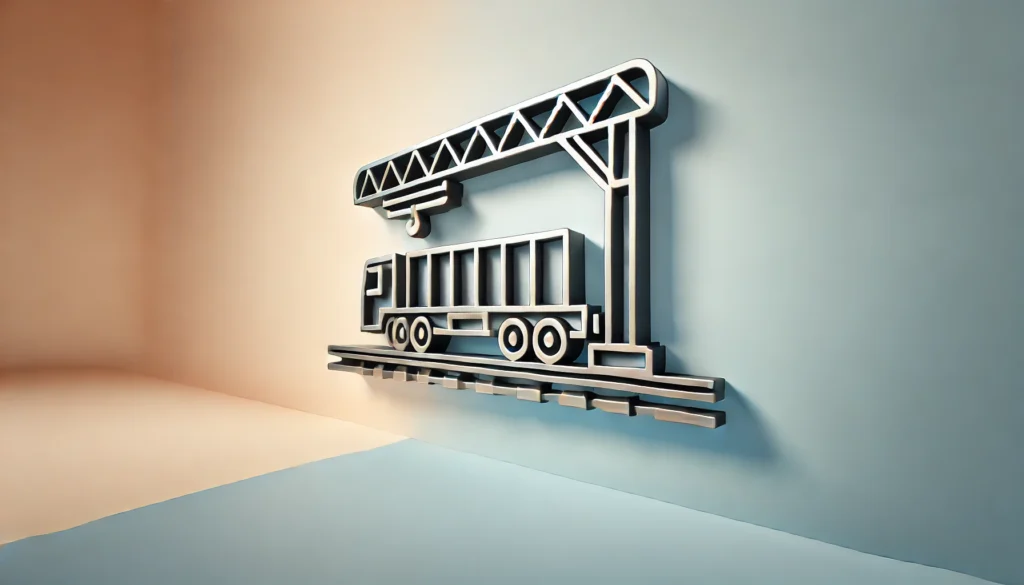The WW2 German railway gantry crane was an engineering masterpiece pivotal to the wartime logistics of the Third Reich. These massive structures played a critical role in managing the transport of military supplies, equipment, and personnel across Europe. Their robust design and precision engineering exemplified Germany’s industrial strength, enabling efficient handling of heavy loads on railway lines.
Importance of Railway Infrastructure in WW2
During World War II, railways were the lifeline of logistics, ensuring swift and reliable transportation of war materials. Germany’s extensive railway network demanded sophisticated equipment like gantry cranes to enhance operational efficiency. These cranes facilitated rapid loading and unloading, minimizing delays and keeping the supply chain functional even under the pressures of war.
The Development of Gantry Cranes in Germany
Gantry cranes were not new inventions during WW2, but German engineers refined their designs to meet wartime demands. Manufacturers such as Krupp and Demag introduced innovative features that increased load capacity and operational speed. These advancements ensured that the cranes could handle the logistical challenges posed by the scale of war.
Role of Gantry Cranes in Wartime Operations
German railway gantry cranes were indispensable for managing wartime logistics. They were used extensively at railway hubs and ports to transfer heavy equipment like tanks, artillery, and fuel containers. Their versatility allowed them to handle diverse cargo types, making them vital assets in sustaining Germany’s war machine.
Engineering Features of WW2 German Railway Gantry Cranes
The engineering of these gantry cranes was a testament to German precision and ingenuity. Built with durable steel, they featured adjustable tracks to accommodate varying railway widths. Many cranes included electric or steam-powered mechanisms, enabling swift and efficient operation even under challenging conditions.
Types of German Railway Gantry Cranes Used in WW2
Various models of gantry cranes were employed, each tailored for specific purposes. Some cranes were designed for handling oversized cargo, while others were optimized for speed and efficiency. Heavy-duty cranes stationed at major railway hubs could lift massive loads, supporting critical military operations.
Loading and Unloading Military Equipment
One of the primary uses of WW2 German railway gantry cranes was loading and unloading military hardware. Tanks, aircraft parts, and artillery pieces were too heavy for manual handling, making these cranes indispensable. Their ability to move such equipment quickly ensured timely deployment to the frontlines.
Facilitating Troop Movements
Beyond equipment, gantry cranes also played a role in troop logistics. Railway cars carrying soldiers required efficient loading and unloading to maintain operational momentum. These cranes helped optimize troop movements, ensuring that forces could be mobilized or redeployed rapidly.
Repair and Maintenance of Railways During WW2
Railways often became targets of Allied bombing campaigns, necessitating frequent repairs. Gantry cranes were crucial in reconstructing damaged railway lines and bridges. Their ability to lift heavy structural components made them essential for maintaining the functionality of Germany’s railway infrastructure.
Efficiency Gains for the German War Machine
The introduction of gantry cranes significantly enhanced the efficiency of Germany’s logistical operations. By reducing the time required for loading and unloading, these cranes ensured a steady flow of supplies and reinforcements. This efficiency was a critical factor in sustaining prolonged military campaigns.
Challenges Faced During Deployment
Despite their advantages, WW2 German railway gantry cranes faced several challenges. They were vulnerable to Allied air raids, as their size and strategic importance made them prominent targets. Additionally, maintaining these cranes in war zones often proved difficult due to resource shortages and logistical constraints.
Notable Gantry Cranes and Their Operations
Some gantry cranes became iconic due to their pivotal roles in major wartime operations. For instance, cranes stationed at Hamburg and Munich were instrumental in managing the massive logistical demands of these key hubs. Their contributions highlighted the strategic importance of such machinery.
Key Railway Hubs Equipped with Gantry Cranes
Major railway hubs like Berlin, Dresden, and Cologne were equipped with advanced gantry cranes. These locations served as vital nodes in Germany’s wartime logistics network, and the presence of gantry cranes ensured seamless operations even under heavy pressure.
German Railway Gantry Cranes in Captured Territories
Germany’s expansion during WW2 saw the deployment of gantry cranes in occupied territories. These cranes were used to exploit local resources and support operations in regions like Poland, France, and the Soviet Union. Their presence underscored the strategic importance of railway infrastructure in sustaining the war effort.
Post-War Usage of WW2 German Gantry Cranes
After the war, many gantry cranes found new purposes in rebuilding Europe’s shattered infrastructure. Some were repurposed for industrial and commercial use, while others were preserved as historical artifacts. Their post-war applications highlighted their durability and engineering excellence.
Lessons Learned from German Engineering
The design and functionality of WW2 German railway gantry cranes influenced future crane technology. Lessons learned from their deployment informed the development of more efficient and versatile cranes, shaping the course of modern engineering.
Preserved WW2 German Railway Gantry Cranes
Today, a few WW2 German railway gantry cranes remain as historical exhibits. Museums and heritage sites showcase these engineering marvels, offering insights into their role during the war. These preserved cranes stand as testaments to the ingenuity and industrial might of their time.
Cultural and Historical Significance
The WW2 German railway gantry crane holds significant historical and cultural value. As symbols of wartime engineering, they provide a window into the logistical challenges of the era. Their legacy continues to captivate historians, engineers, and enthusiasts alike.
Summary of the Role of WW2 German Railway Gantry Cranes
WW2 German railway gantry cranes were vital components of the Third Reich’s logistical operations. Their robust engineering and versatile applications underscored their importance in sustaining Germany’s war effort. From transporting military hardware to rebuilding infrastructure, these cranes played a multifaceted role in the war.
Final Thoughts on Their Legacy
The legacy of WW2 German railway gantry cranes extends beyond their wartime contributions. They remain a source of fascination and inspiration, reflecting the industrial prowess and innovative spirit of their creators. Their story is a reminder of the profound impact of engineering on history.


